Gallery Updates – New work
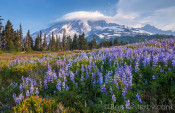
Hello friends.
I’ve reorganized the galleries for easy navigation by location and posted several new pieces in a New Work gallery. Enjoy.
August Tip
Avoiding the Digital Avalanche – Choosing Your Best
One of my first tips was a method for going through your pictures multiple times, from first download to later reviews, systematically removing the ones that did not work, or that you didn’t need to remember the moment. As a follow up, I’d like to talk about choosing your best work to share.
Here are three criteria, and one rule:
Criteria:
1. Emotional Impact
2. Compositional Excellence
3. Story
The Rule:
1. A single image of a single moment.
Emotional impact is first because the purpose of photography is to communicate. A great many technical and compositional flaws can be forgiven if an image has great emotional impact. How do you judge emotional impact? Two ways. First, your own reaction. Second, the reaction of trusted viewers. Two of my most successful prints never would have put to paper if not for the input of trusted viewers. As the photographer, it can be hard to judge your own work. Seek input as well trust yourself.
Compositional Excellence is self explanatory. Balance, dynamism, tension, strength, motion, color, focus, etc. Look at the best photographers’ work and judge your composition against their finest pieces.
Story is a bit more complex. Does the piece invoke additional imagery? Do people associate it with other stories? (like this month’s print did with Greek mythology) Do you sense a narrative when you look at it? Can you sense what happened just before, or what might happen next?
Share only one image of a single moment for the simple fact that multiple images of the same moment dilute the impact of those images in direct proportion to the number of shots of it being shared.
July Tip
Software – in the clouds
If you use Adobe software, you know about their move to a ‘software in the cloud’ model. You no longer ‘own’ your own copy, but rent it on a monthly basis. This model has many people up in arms, especially those who only use a single tool from Adobe, like Photoshop. I was skeptical at first, but the more I looked into it, the more I became convinced that $20/month for thousands of dollars worth of software is a actually a tremendous bargain. The key benefit is that you get access to nearly all Adobe software. Adobe may raise the monthly price in the future, but right now this is a remarkably good deal.
In the first month I’ve utilized over $4k worth of professional grade software for just $20 to start. Over the course of a year, that’s $240 for a suite of tools that I wouldn’t have otherwise purchased due to the initial cost.
If you use any CS6 version you get a $9/month discount for joining the collective, er…cloud.
June Expedition Update
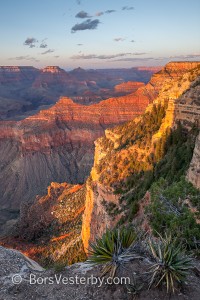 What began in the desert at the Grand Canyon has turned into a minor odyssey to escape a late spring heatwave that bubbled up out of northern Mexico a few weeks ago and raised temperatures 10-20 degrees across the southwest and beyond. In Zion before the hot swept in we enjoyed highs is the mid to low eighties, and as we fled north into the rocky mountains it hit 106 degrees.
What began in the desert at the Grand Canyon has turned into a minor odyssey to escape a late spring heatwave that bubbled up out of northern Mexico a few weeks ago and raised temperatures 10-20 degrees across the southwest and beyond. In Zion before the hot swept in we enjoyed highs is the mid to low eighties, and as we fled north into the rocky mountains it hit 106 degrees.
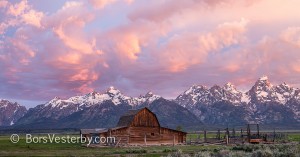
Soon after arriving in the mountains we were greeted by this dawn at Grand Teton National Park. The ground squirrels were still in their burrows when this light hit the clouds over one of the iconic log barns out on Antelope Flats east of the range.
Next expedition — 4 weeks in canyon country
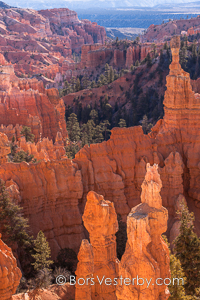 Shortly I will depart for my next photo expedition to northern Arizona and southern Utah. I’ll visit the classics, from Canyon de Chelly to Canyonlands National Park, as well as some kayak exploring of the flooded red rock canyons of Lake Powell.
Shortly I will depart for my next photo expedition to northern Arizona and southern Utah. I’ll visit the classics, from Canyon de Chelly to Canyonlands National Park, as well as some kayak exploring of the flooded red rock canyons of Lake Powell.
I’ll keep the ‘Tweets from the Field’ going throughout the trip. Most of the time will be spent in the desert far from cell towers, but I’ll keep you up to date on any spectacular finds.
See you in the field!
Croc wows
What a great weekend at Best of the Northwest Spring show. My 9 foot long crocodile on canvas was a bit of a sensation. Small crowds would form to look look and discuss the creature. A dozen or so took photographs of themselves with the piece. I lost count of how many times I shared the exciting story of finding the beast and the challenge of creating the image, a stitched panorama made from a moving boat with a handheld 600mm lens. You can read about the creation of this pieced on the Luminous Landscape here. http://www.luminous-landscape.com/essays/tippyboat.shtml
March Tip
Visual Story Telling, Part 2, Association
As mentioned last month, when we read a book, we all read the same words, but each of us creates a unique vision of the story. With a photograph, we all visually see the same image, but each of us creates a unique story out of that vision.
Intentionally creating a visual story can be done in a number of ways. Three of my favorites include Structure, Association, and Evocation.
This month I want to share the idea of Association. What I’m really talking about is Primal Association, a gut level response. Association at its center is the act of linking ideas and feelings together. It utilizes and links what is already familiar in the viewers mind, the stories that are already there. In primal association you create and associate strong emotion with their story.
For example, you can create a photograph of a familiar landmark, and people who know it will have some kind of associative response to their personal experience, no matter the quality of the image. The goal with primal association is to take that association and raise it to primal intensity. It’s the difference between a viewer saying, “yeah, I’ve been there” vs. “Oh my! Honey, come look at this. We were right there.”
How is this done? By adding an element that links the viewer to the place with a primal response. Examples include: danger, peace, adventure, scale, transportation (as in transporting the viewer into the place), and comfort. Take their experience and associations with the place and elevate that story emotionally.
An example is my piece, Between Storms. Everyone in western Washington is familiar with ‘the Mountain.’ Few have seen it in deep winter, and fewer yet in a winter dawn blazing with violet-magenta sunrise color. When people see ‘their mountain’ lit so perfectly and associated with high adventure, they are struck. I am deeply honored to say that the piece has brought tears to the eyes of more than one Washingtonian. It does so through the power of association.
February Tip
Visual Story Telling
(from the Mt. Rainier workshop curriculum)
When we read a book, we all read the same words, but each of us creates a unique vision of the story. With a photograph, we all visually see the same image, but each of us creates a unique story out of that vision.
Intentionally creating a visual story can be done in a number of ways. Three of my favorites include Structure, Association, and Evocation.
Structure takes the eye on a visual journey. The viewer’s gaze traverses the image guided by its structure. The eye wanders, discovering as it goes.
In the field, let your eye wander the scene before you reach for the camera. In the back of your mind note where you are looking and what interests you. With practice you will notice the pattern your gaze takes. Imagine how that would look in a composition. Then pick up the camera and see how it ‘sees’ the view. You are well on your way to photographing a story of that place.
Why Limited Editions
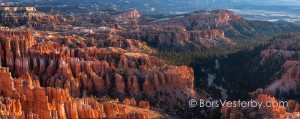 After long consideration, I have chosen to make all future work in Limited Editions. The reasoning for this decision is, I think, of interest to both photographers and collectors. Ultimately, it is about what makes a photographic print Fine Art.
After long consideration, I have chosen to make all future work in Limited Editions. The reasoning for this decision is, I think, of interest to both photographers and collectors. Ultimately, it is about what makes a photographic print Fine Art.
Creating Fine Art
When I set out to photograph a location, I seek to communicate my personal, unique experience and vision of the wonder of that place. It is art with purpose. The intent is to draw you into that sense of place so deeply, that it feels as though you are there yourself. It is fantastically time consuming and expensive to create such art, and each piece I publish stands as a representative of my finest effort.
Printing Fine Art
When I set out to create a print of a location, the purpose is the same. After detailed development of the raw picture to recreate what my eye saw and my heart felt on location, I set about putting that vision onto paper. In order to achieve the goal, only the finest materials are used. The very latest, cutting edge printing technology with pigment inks to last a century. The finest papers. Archival mat boards. Even the dust cover on the back of my frames is archival.
I am creating a piece of art to stand the ages that represents the finest output of my artistic vision and technical expertise. What I am not creating is a mass-produced ‘pic’ or ‘shot.’ Yet, in the age of pigment inkjet printers, once the final work is created, any number of perfect prints can be produced. The consistency of this final output is a wonder to behold, yet, should we as artists and collectors allow a printing technology to define how we think about art? I propose that we should not, especially not where the production of each piece is a long term quest for ultimate quality.
This is why I have chosen to limit my editions.
Announcing Limited Edition Prints
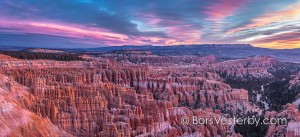 Every new Bors Vesterby image announced in 2013 is a Limited Edition print. Beyond my unconditional guarantees, every new Bors Vesterby Fine Art piece will be produced in an Exclusive Limited Edition, each work dated and numbered sequentially.
Every new Bors Vesterby image announced in 2013 is a Limited Edition print. Beyond my unconditional guarantees, every new Bors Vesterby Fine Art piece will be produced in an Exclusive Limited Edition, each work dated and numbered sequentially.
The select images chosen for Print of the Month pieces will be produced in an edition of only 50 pieces each, inclusive of every size. Once the 50th image of that piece is sold, no others will be produced.
Invest with the knowledge that your print will be one of a select few, signed and dated uniquely. Every print accompanied by a signed and numbered Certificate of Authenticity.


 Tweets from the Field
Tweets from the Field